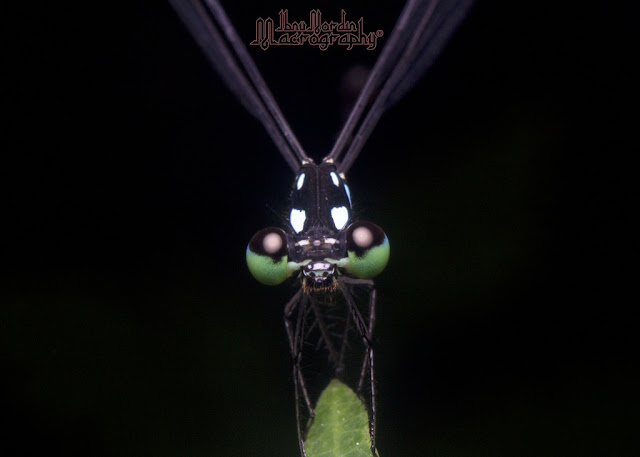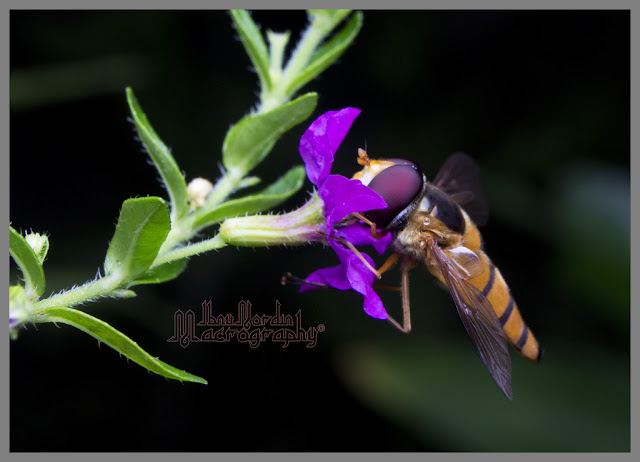Wednesday 3 October 2012
Skipper @ Hesperiidae
A skipper or skipper butterfly is a butterfly of the family Hesperiidae. They are named after their quick, darting flight habits. There are more than 3500 recognized species of skippers and they occur worldwide, but with the greatest diversity in the Neotropical regions of Central and South America.
The Hesperiidae are placed in a monotypic superfamily Hesperioidea. This is because they form a lineage apart from other Rhopalocera (butterflies), which mostly belong to the typical butterfly superfamily Papilionoidea. The third and rather small butterfly superfamily are the moth-butterflies (Hedyloidea) which are restricted to the Neotropics. Hesperioidea is very likely the sister group of Papilionoidea, and together with Hedyloidea they constitute a natural group (clade). Collectively, these three groups of butterflies share many characteristics, especially in the egg, larval and pupal stage.
Reference From Wikipedia, the free encyclopedia
Wednesday 29 August 2012
Droplet
A drop or droplet is a small column of liquid, bounded completely or almost completely by free surfaces. A drop may form when liquid accumulates at the lower end of a tube or other surface boundary, producing a hanging drop called a pendant drop. Drops may also be formed by the condensation of a vapor or by atomization of a larger mass of liquid.

Friday 17 August 2012
Giraffe Weevil
The giraffe weevil (Trachelophorus giraffa) is a weevil endemic to Madagascar.It derives its name from an extended neck much like that of the common giraffe. The giraffe weevil is sexually dimorphic, with the neck of the male typically being 2 to 3 times the length of that of the female. Most of the body is black with distinctive red elytra covering the flying wings. The total body length of the males is just under an inch (2.5 cm), among the longest for any Attelabid species. The extended neck is an adaptation that assists in nest building and fighting. When it comes time to breed, the mother-to-be will roll and secure a leaf of the host plant, Dichaetanthera cordifolia and Dichaetanthera arborea (a small tree in the family Melastomataceae), and then lay a single egg within the tube. She will then snip the roll from the remaining leaf in preparation of the egg hatching.
Another beetle with a similar common name is the New Zealand giraffe weevil, Lasiorynchus barbicornis. This is the longest weevil in the world, and is from the family Brentidae.
Reference From Wikipedia, the free encyclopedia
Monday 6 August 2012
Cuckoo Bee
The Cuckoo Bee
The term cuckoo bee is used for a variety of different bee lineages which have evolved the kleptoparasitic habit of laying their eggs in the nests of other bees, reminiscent of the behavior of cuckoo birds. The name is technically best applied to the apid subfamily Nomadinae. Females of cuckoo bees can be easily recognized in almost all cases, as they lack pollen collecting structures (the scopa) and do not construct their own nests. They often have reduced body hair, abnormally thick and/or heavily sculptured exoskeleton, and saber-like mandibles, though this is not universally true, and other less visible changes are common, as well.They typically enter the nests of pollen-collecting species, and lay their eggs in cells provisioned by the host bee. When the cuckoo bee larva hatches it consumes the host larva's pollen ball, and, if the female kleptoparasite has not already done so, kills and eats the host larva. In a few cases where the hosts are social species (e.g., the subgenus Psithyrus of the genus Bombus, which are parasitic bumble bees that infiltrate nests of non-parasitic species of Bombus), the cleptoparasite remains in the host nest and lays many eggs, sometimes even killing the host queen and replacing her - such species are often called social parasites, though a few of them are also what are referred to as "brood parasites."
Many cuckoo bees are closely related to their hosts, and may bear similarities in appearance reflecting this relationship. This common pattern gave rise to the ecological principle known as "Emery's Rule". Others parasitize bees in different families, like Townsendiella, a nomadine apid, one species of which is a cleptoparasite of the melittid genus Hesperapis, while the other species in the same genus attack halictid bees.
Reference From Wikipedia, the free encyclopedia
Tuesday 17 July 2012
Thursday 14 June 2012
Robber Fly @ Asilidae
Insects in the Diptera family Asilidae are commonly called robber flies. The family Asilidae contains about 7,100 described species worldwide.
All robber flies have stout, spiny legs, a dense moustache of bristles on the face (mystax), and 3 simple eyes (ocelli) in a characteristic depression between their two large compound eyes. The mystax helps protect the head and face when the fly encounters prey bent on defense. The antennae are short, 3-segmented, sometimes with a bristle-like structure called an arista.
The short, strong proboscis is used to stab and inject victims with saliva containing neurotoxic and proteolytic enzymes which paralyze and digest the insides; the fly then sucks the liquefied meal through the proboscis. Many species have long, tapering abdomens, sometimes with a sword-like ovipositor. Others are fat-bodied bumblebee mimics. Adult robber flies attack other flies, beetles, butterflies and moths, various bees, ants, dragon and damselflies, Ichneumon wasps, grasshoppers, and some spiders.
Tuesday 5 June 2012
Sunday 27 May 2012
Light Trail - Penang Bridge
Tuesday 22 May 2012
First Malaysian.. Nazmi Faiz Mansor
 |
| Portugal League Table 2011/2012 |
The 17-year-old signed terms with the club following a successful trial and is set to become the first Malaysian to play in the top flight of a major European league.
His agent, Marco Guimaraes, confirmed the deal.
“Nazmi has signed a three-year contract to play for Beira Mar’s first team. I cannot reveal more,” said Guimaraes when contacted yesterday.
Nazmi’s signing means he will no longer play with the Young Tigers A in the Singapore League though he will continue to turn out for the national Under-22 team.
The talented midfielder will link up with his national teammates in Hungary this week where the national juniors are undertaking a European tour in preparation for the AFC Under-22 Championship qualifiers in Myanmar next month.
Source and Info :
www.nst.com.my and Official Facebook Nazmi Faiz : www.facebook.com/NazmiFaiz21
www.nst.com.my and Official Facebook Nazmi Faiz : www.facebook.com/NazmiFaiz21
Tuesday 15 May 2012
Dragonfly
A dragonfly is a double winged insect belonging to the order Odonata, the suborder Epiprocta or, in the strict sense, the infraorder Anisoptera (from Greek ανισος anisos, "uneven" + πτερος pteros, "wings", due the hindwing being broader than the forewing). It is characterized by large multifaceted eyes, two pairs of strong transparent wings, and an elongated body. Dragonflies are similar to damselflies, but the adults can be differentiated by the fact that the wings of most dragonflies are held away from, and perpendicular to, the body when at rest. Dragonflies possess six legs (like any other insect), but most of them cannot walk well. Dragonflies are some of the fastest insects in the world.
Dragonflies are valuable predators that eat mosquitoes, and other small insects like flies, bees, ants, wasps, and very rarely butterflies. They are usually found around marshes, lakes, ponds, streams, and wetlands because their larvae, known as "nymphs", are aquatic. Some 5680 different species of dragonflies are known in the world today.
Saturday 12 May 2012
Treehopper
Treehoppers (more precisely typical treehoppers to distinguish them from the Aetalionidae) and thorn bugs are members of the family Membracidae, a group of insects related to the cicadas and the leafhoppers. About 3,200 species of treehoppers in over 600 genera are known. They are found on all continents except Antarctica, although only three species are found in Europe.
They are best known for their enlarged and ornate pronotum, which most often resembles thorns, apparently to aid camouflage. In some species, the pronotum grows to a horn-like extension, but even more bizarre and hard-to-describe shapes are also found.
Thorn bugs, due to their unusual appearance, have long interested naturalists. Distinguishing males from females is accomplished only by looking at the male genitalia. Individual treehoppers usually live for only a few months, but they belong to a lineage that is at least 40 million years old.
Labels:
Macro
Thursday 10 May 2012
Wednesday 9 May 2012
Subscribe to:
Posts (Atom)














.jpg)























